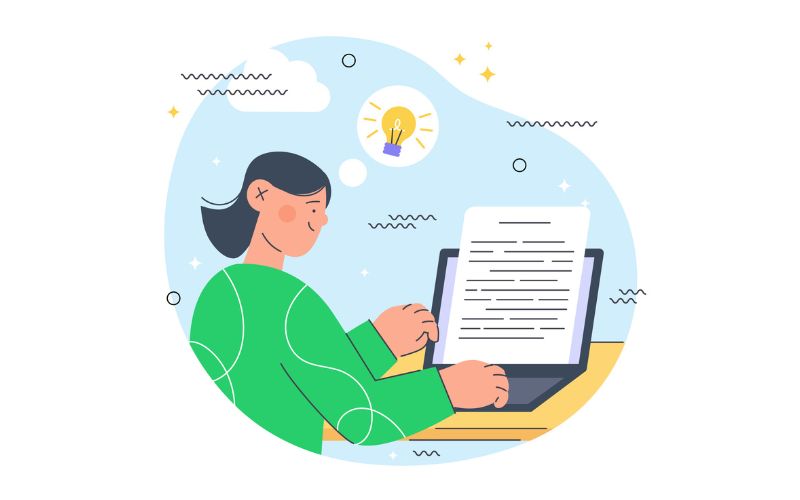Have you ever sent a message and later realized it contains awful mistakes? It happens to all of us. But those little grammar errors can make a big difference. They can make what you’re saying hard to understand or even make you look unprofessional.
But don’t worry! There’s an efficient way to fix it. You can use a few basic proofreading strategies to make your write-ups squeaky clean of all mistakes.
So, in this guide, we’ll show you the 6 best proofreading techniques to spot any grammatical error. So, if you wish to become more confident in your writing and make your work flawless, continue reading it till the end.
6 Best Proofreading Tips for Error-free Writing

Read It Out Loud
Reading aloud is one of the best strategies for proofreading. Using both your eyes and ears when reading aloud helps you catch errors and odd words that could have escaped your attention. If a statement appears difficult or confusing, alter it to make it clearer.
This helps you to listen to every single word and involves your auditory senses in the process, which means that you can hear how the text actually sounds when it is read. If you read too fast, your brain might skip over mistakes without you realizing it. So, it’s better to read slowly and carefully.
Make a List of Errors
A professional-looking piece of writing must be consistent. When proofreading, you’ll often find the same mistakes happening again and again. Knowing where these mistakes usually happen can help you find them faster and fix them.
Common mistakes include mixing up quotation marks (‘’ and”) and using words incorrectly, like ‘you’re’ and ‘your,’ or ‘there’ and ‘their.’ You might also often mistype ‘where’ as ‘were’ or forget to close brackets. If you know what mistakes you usually make, pay extra attention to those parts of your writing. That way, you can catch mistakes before anyone else sees them.
Give It Some Time
It is recommended to pause after finishing a writing assignment before proofreading. This pause enables you to renew your focus and tackle your task from a new angle. You can more easily see mistakes if you remove any irrelevant sentence from the information.
If you try to proof-check a lengthy article all at once, you’ll probably miss out on some blunders. So, it’s important to give yourself a break. After that, you can come back with a fresh mind to go through each line carefully. This way, you can check for common grammar and spelling mistakes. Proofreading is one of the final steps in writing, and it takes time. If you rush, the result might not be 100% perfect.
Divide the Text into Manageable Chunks
Dividing content into manageable chunks is especially useful when proofreading large works like a thesis, research paper, or assignment.
It can prevent you from feeling overwhelmed and help you concentrate better. To begin, read the entire text to understand it. Then, identify breaks such as paragraphs or sections. Once you’ve identified these breaks, divide the text into smaller parts using them as your guide. You can highlight each part to make it easier to see.
Similarly, focus on simplifying complex sentences to make your writing more concise. A well-written content requires precision and clarity. To achieve this, remove adverbs, adjectives, and unnecessary turns of phrase. By doing so, you’ll create a document that is precise and easy to read.
Use an AI-powered Grammar Checker
The right tools make proofreading easier. When you get rid of unnecessary words, your writing becomes clearer and more engaging.
An AI-based grammar checker helps you make your writing easier to understand by removing grammar and style issues. You just need to enter your text into the tool, and it will swiftly review it and suggest edits to make it clearer and more engaging.
A grammar checker is a great resource for anyone involved in writing tasks, such as students, journalists, bloggers, and writers.
Proofread Multiple Times
It’s difficult to detect every type of error in one determined run-through of your text: you’ll overexert your brain, leading to missed mistakes.
Proofreading your text once may not catch every mistake. If you try to do it all at once, you might miss errors because it strains your brain too much. Instead, read through your document multiple times, focusing on one type of mistake each time.
Don’t just proofread once. Take a systematic approach and go through several rounds of editing. Each round should focus on a different aspect of your writing. It’s more efficient to divide your proofreading into sections to catch different types of mistakes.
Conclusion
Proofreading is essential to creating high-quality content. When done correctly with full concentration, it can significantly enhance your writing style. Great work cannot be generated without being reviewed.
Hence, proofreading is crucial throughout the entire writing and presentation process. You may think that you can proofread it yourself since you have spent all the time writing. However, by using the techniques mentioned above, you can effectively proofread your work and improve it accordingly.